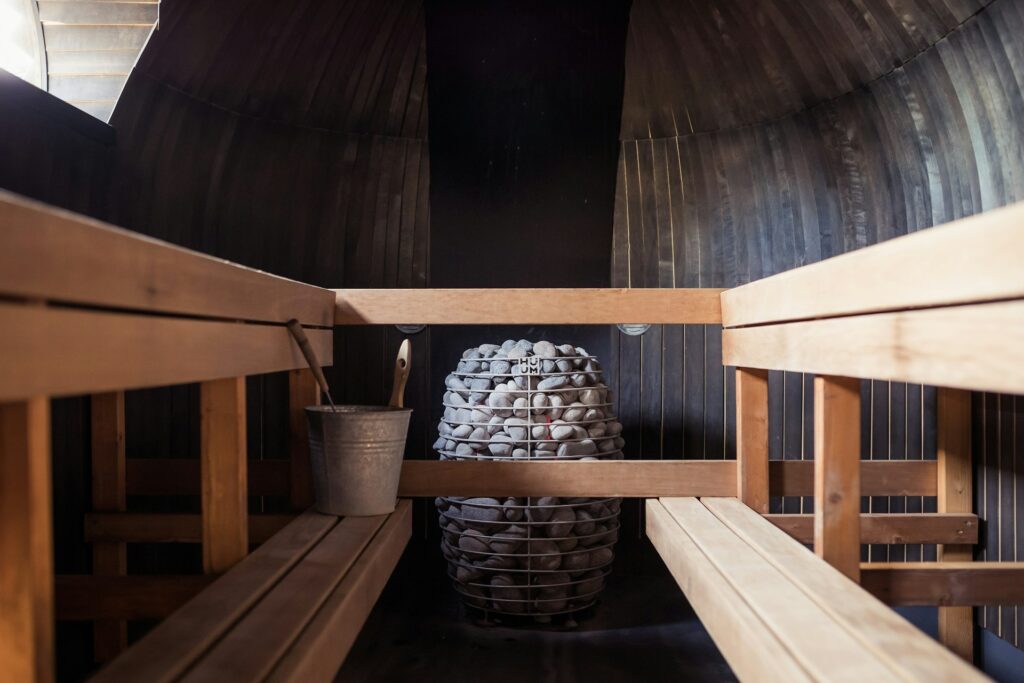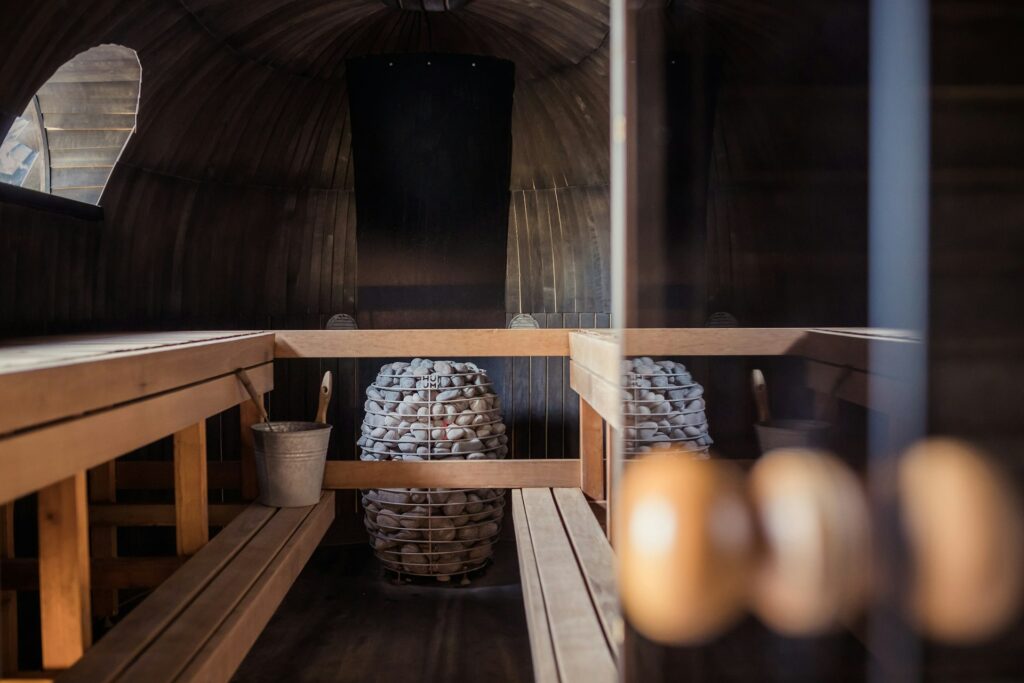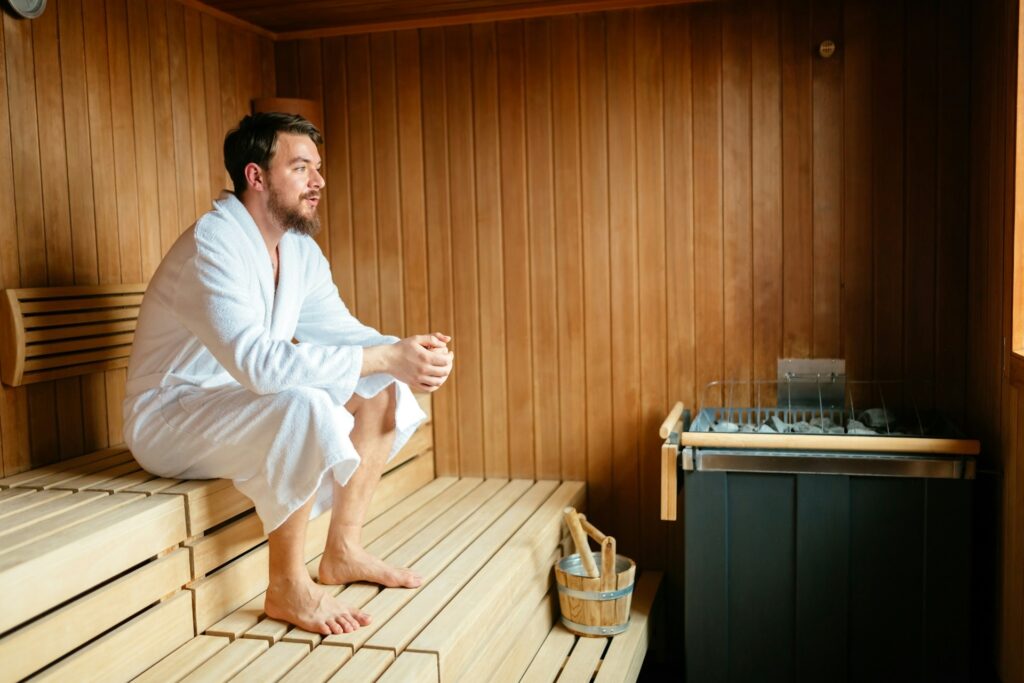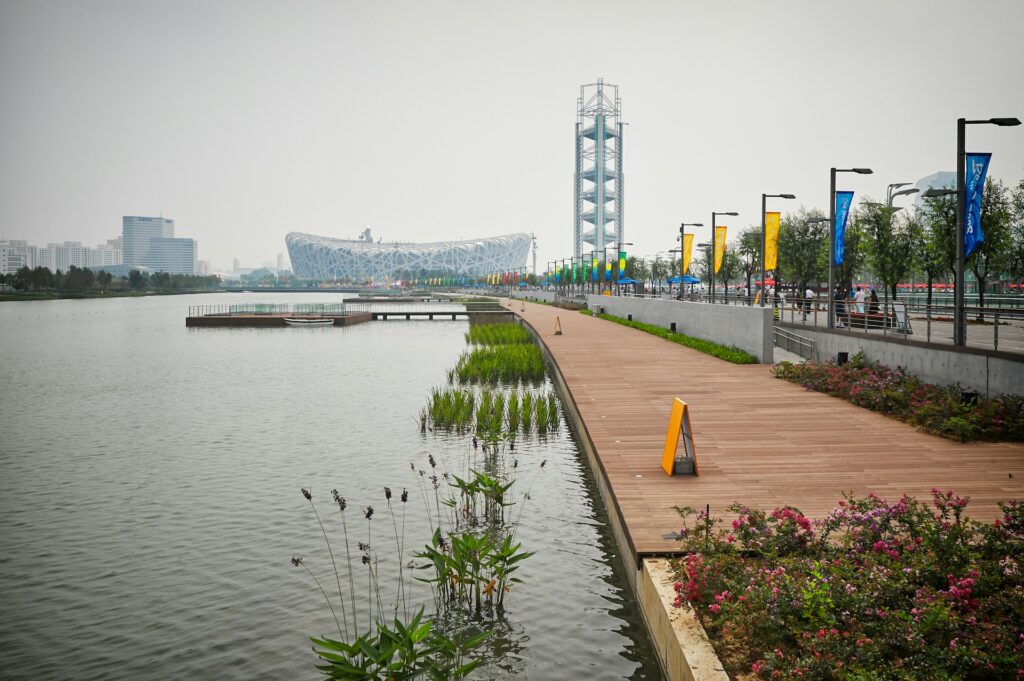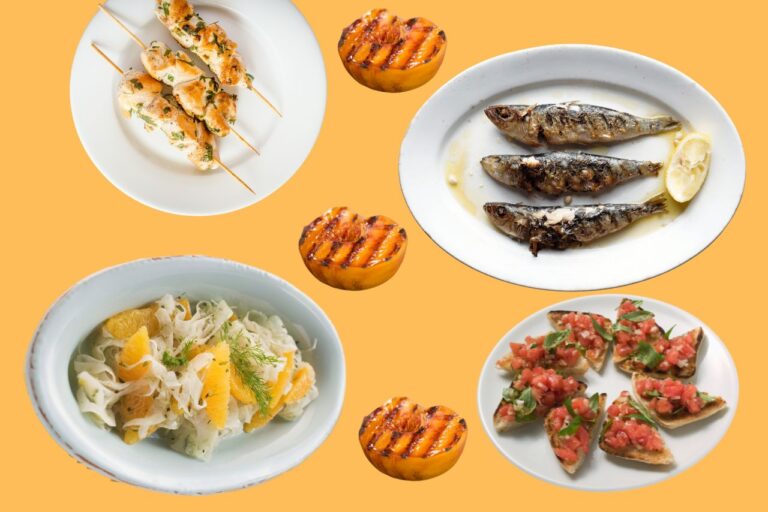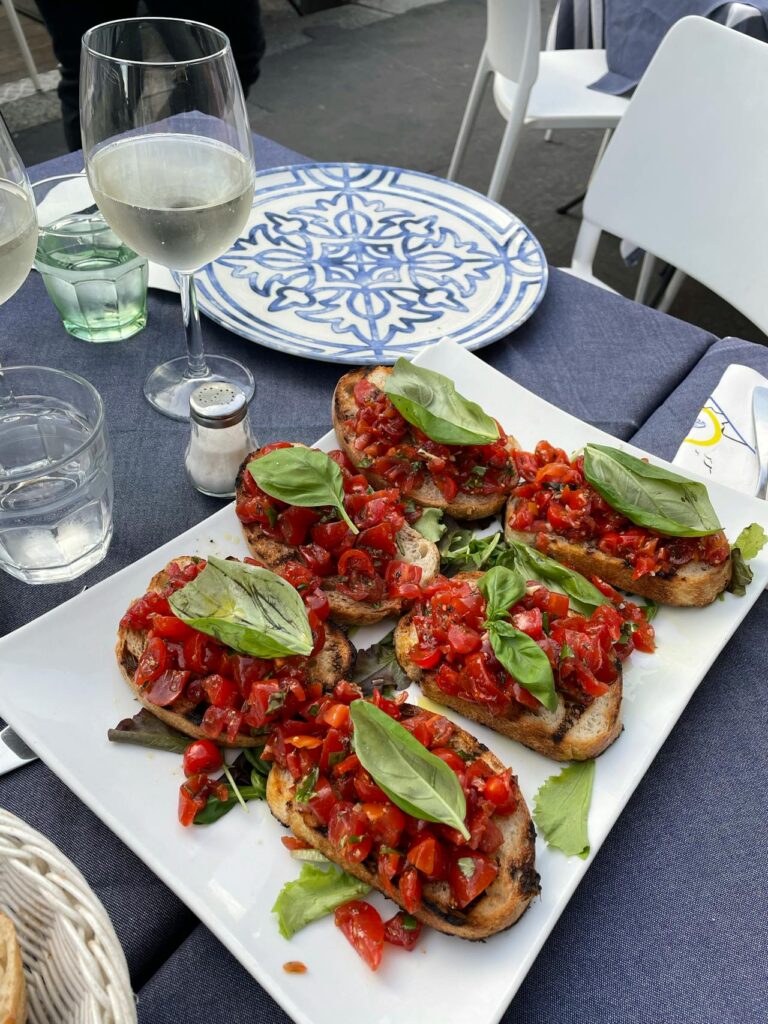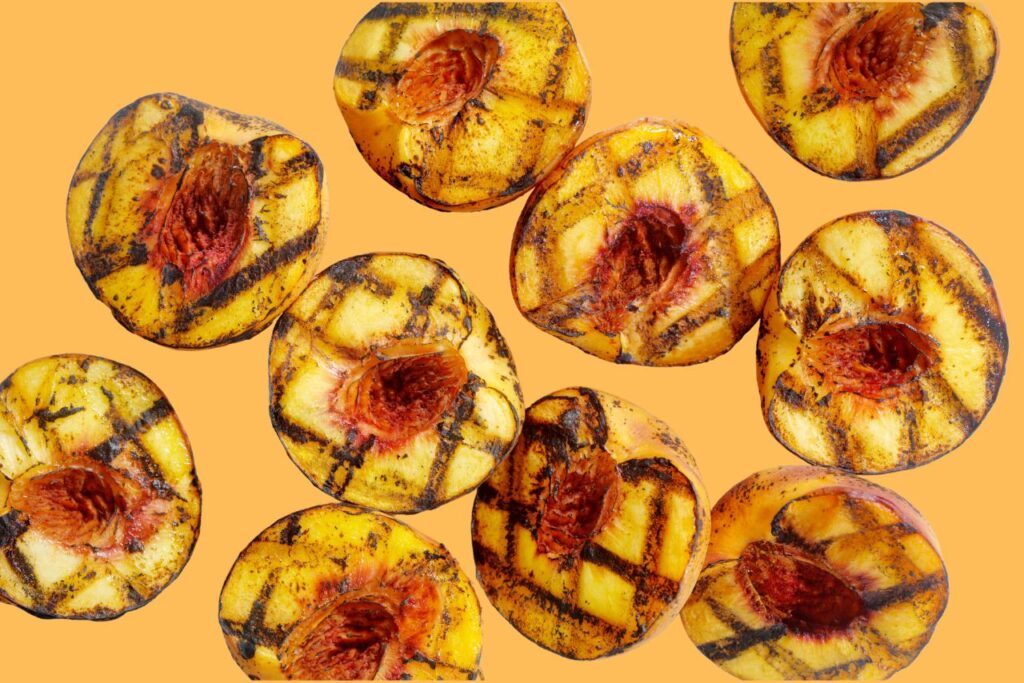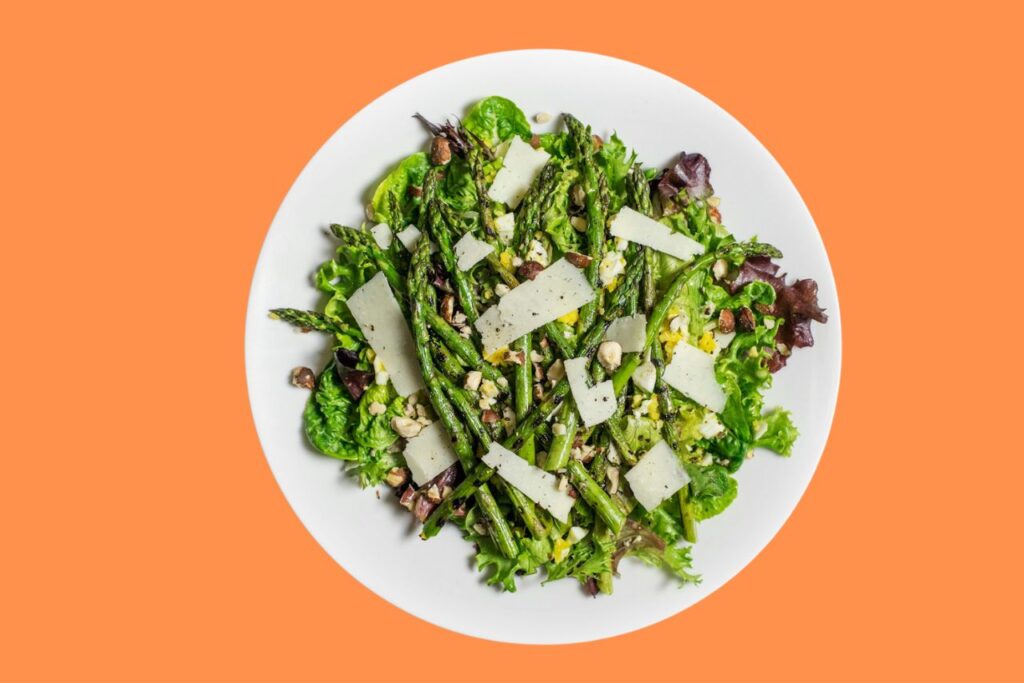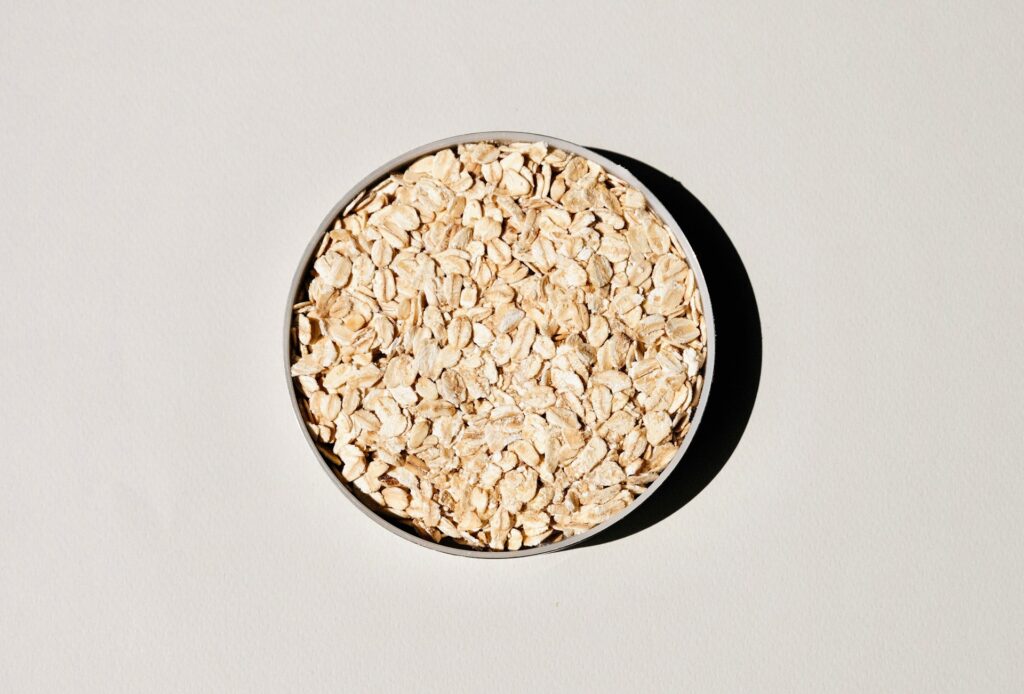Life can be full of surprises – just ask anyone who moved here expecting a sleepy seaside town with nothing but fish and chips and tea rooms. “But that’s not part of the deal”, they said. In 2024, it is very much the real Deal…
…Hmmm, that introduction was pretty laboured but let’s not dwell on things; we’ve got food to eat and ‘the art of the Deal’ jokes to cook up.
This stretch of Kent coastline, the so-called White Cliffs Country where the North Sea meets the English Channel in a daily dance of tides and light, has quietly evolved into something remarkable. Deal, once content with its role in maritime history as a crucial naval port and smugglers’ haven (where the Boatmen’s rooms in seafront houses hint at a shadier past), has transformed into the kind of place that first has food lovers cancelling their return tickets and checking when the last train home is. And then, firing up Rightmove on that 22:30 to London St Pancras International to check house prices.
While day-trippers might initially come for the pebble beach and Henry VIII’s imposing castle (both worthy attractions, to be sure), it’s the town’s thriving culinary scene that keeps them lingering far longer than planned.
From contemporary Japanese small plates to French-inflected bistro fare, via some of the freshest seafood you’ll find anywhere in the UK, here’s our pick of where to eat in Deal right now: the best restaurants in Deal.
The Blue Pelican, Beach Street
Ideal for elegant Japanese-inspired small plates in a serene setting…
If there’s a more intriguing dining spot on the Kent coast right now, we haven’t found it. Housed in a handsome seafront townhouse, The Blue Pelican is the latest venture from Chris Hicks and Alex Bagner (the duo behind The Rose – more of that later), and it’s already turning heads with its considered approach to Japanese cuisine – enough to earn glowing reviews from both Grace Dent in the Guardian and William Sitwell in the Telegraph.
The poised dining room sets the tone perfectly – all clean lines and calming cerulean hues, with a striking triptych of Hokusai-inspired wave murals adding drama and a sense of place (painted by local artist Tom Maryniak, those waves are actually crashing over Deal seafront) to proceedings.

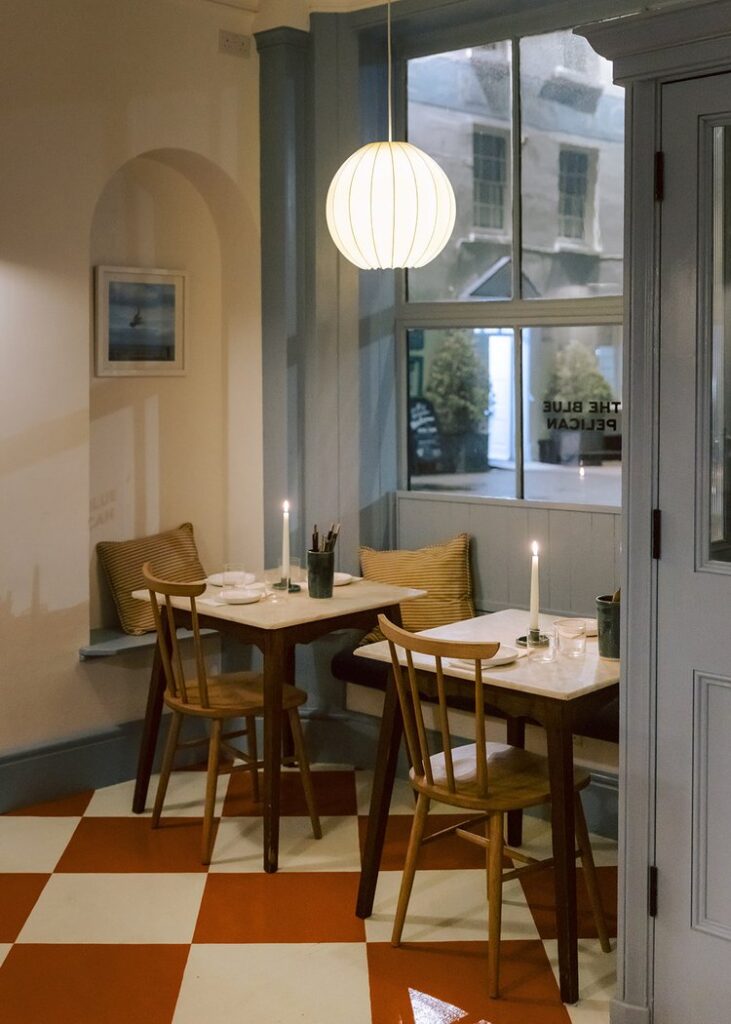

Paper globe lanterns cast a gentle glow over the checkerboard floor, while candlelit marble tables and mid-century chairs nuture intimate spots for lingering over dinner. Grab a seat at the open counter, where chef Luke Green (formerly of Quo Vadis and with five years’ experience in Tokyo) works with quiet precision, sending out plates that marry Kent produce with Japanese technique. It calls to mind London’s supremely composed spot Evernight, which is certainly no bad thing.
Begin your meal with the must-order crab croquettes, which feel extravagantly priced at two for £12 until you see (or indeed taste) the damn things; lasciviously laden with the low thrum of brown crab meat and topped with piquant kewpie mayo and flecks of seaweed that at first glance has you thinking its shaved truffle. Order, too, the glazed chicken heart kushiyski, grilled on bamboo skewers and topped with a delicately piped zigzag of silky smooth liver parfait and the finest slices of chive. There’s some good tekkers in the Pelican brigade, that’s for sure.



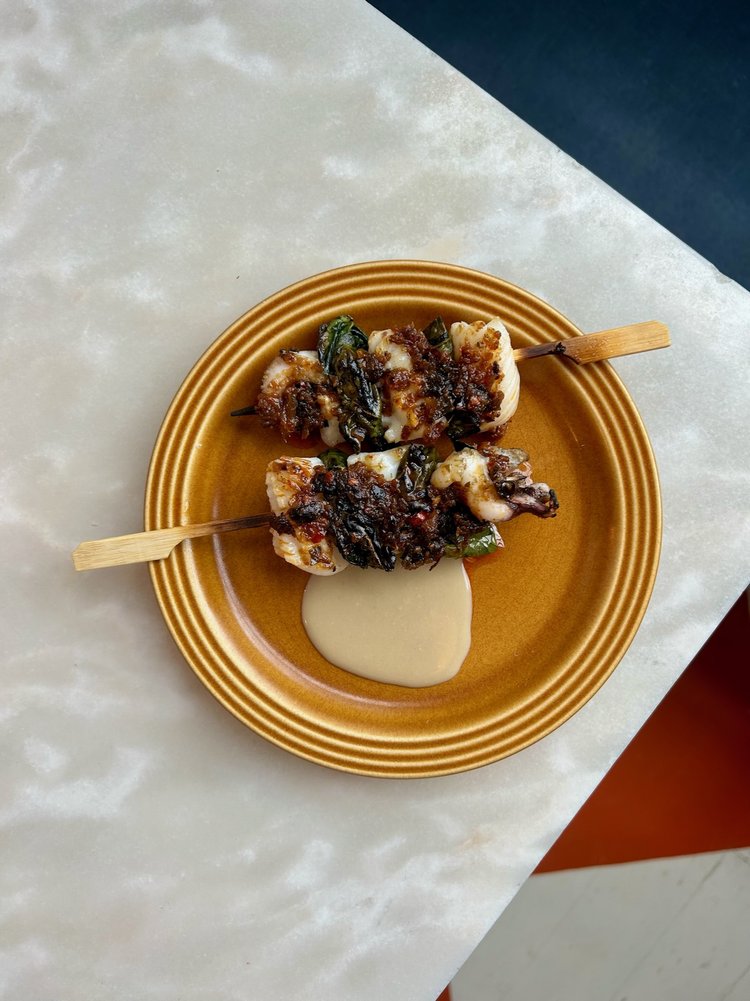

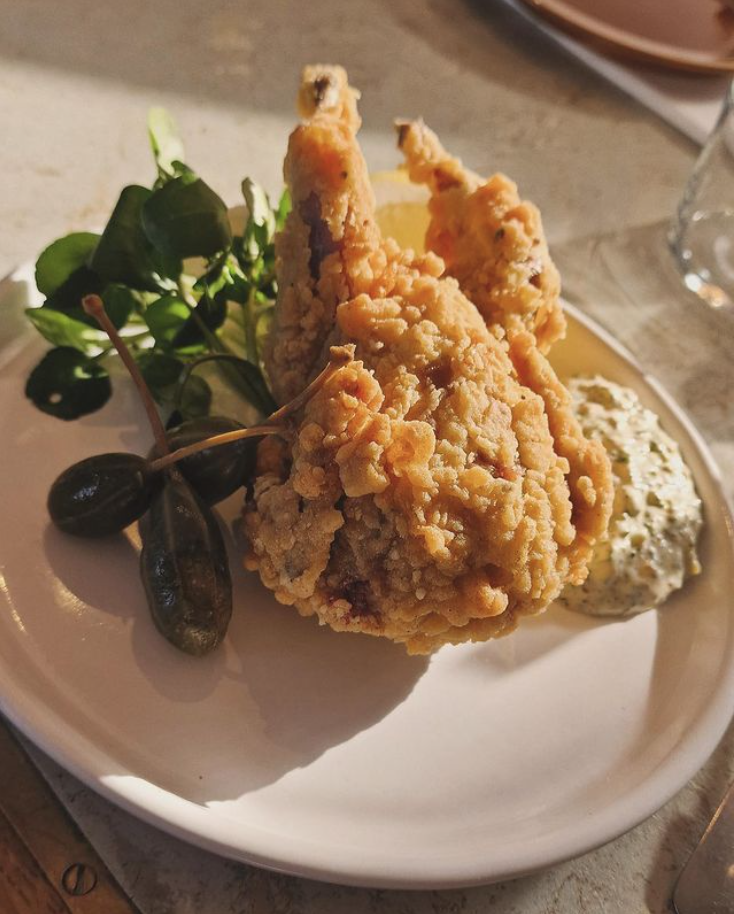
A pile of puffed, crisp pork crackling with whipped cod’s roe and more flecks of nori seaweed has us beginning to question the Japanese part of the deal here – but they pair so beautifully with a crisp Kirin Ichiban so it’s all soon forgotten.
From the specials, thin slices of line-caught seabass sashimi are paired with kumquats and sisho, demonstrating Green’s light touch in a meal that needed it. The sharing plates reward groups willing to dive in together – the pork katsu with bitter leaves, coming in at £38, is perfect for two or three to share. The whole quail karage is something we chose to keep all to ourselves.
It’s all incredibly satisfying, well thought out food, and the drinks list is equally thoughtful, roaming from Peckham-brewed sake (try a glass of Kampai Kumo Junmai for £8) to inventive cocktails like the umeshu negroni and miso old fashioned. The English-leaning wine selection shows similar imagination, crowned by the Westwell ‘ZD’ Blanc de Blanc Zero Dosage at £85 – a serious Kent sparkling that can hold its own against many a champagne twice the price.
For the best value, grab a lunch table on Thursday or Friday when a set menu is available for £23. Book ahead for the chef’s counter (the best seats in the house) or request the private dining room upstairs for groups of six or more – it catches the evening sun beautifully and offers views over Deal’s conservation area.
Open Wednesday-Saturday for dinner (6-9pm), plus lunch service Thursday-Saturday (12-2:30pm). Closed Sunday to Tuesday.
Website: thebluepelican.co.uk
Address: 83 Beach St, Deal CT14 6JA
Updown Farmhouse, Updown Road
Ideal for ingredient-led cooking in idyllic surrounds…
Just a 15-minute drive inland from Deal’s seafront, Updown Farmhouse is worth seeking out for some of the most exciting cooking in Kent right now. This gorgeously restored 17th-century red brick farmhouse, with its stone steps leading through a lovingly tended garden, looks like something straight out of a Jane Austen novel.
The dining room itself is pure romance – a vine-draped heated conservatory where vintage rattan pendants cast a gentle glow over crisp white tablecloths. Through the glass walls, seven acres of grounds stretch into the distance, while inside, the original farmhouse bread oven and wood-fired grill add both drama and delicious smoky notes to proceedings. This all feels a world away from the coastal cuisine you perhaps came here expecting, but sometimes you just need an escape from your initial intended brand of escapism, don’t you think?
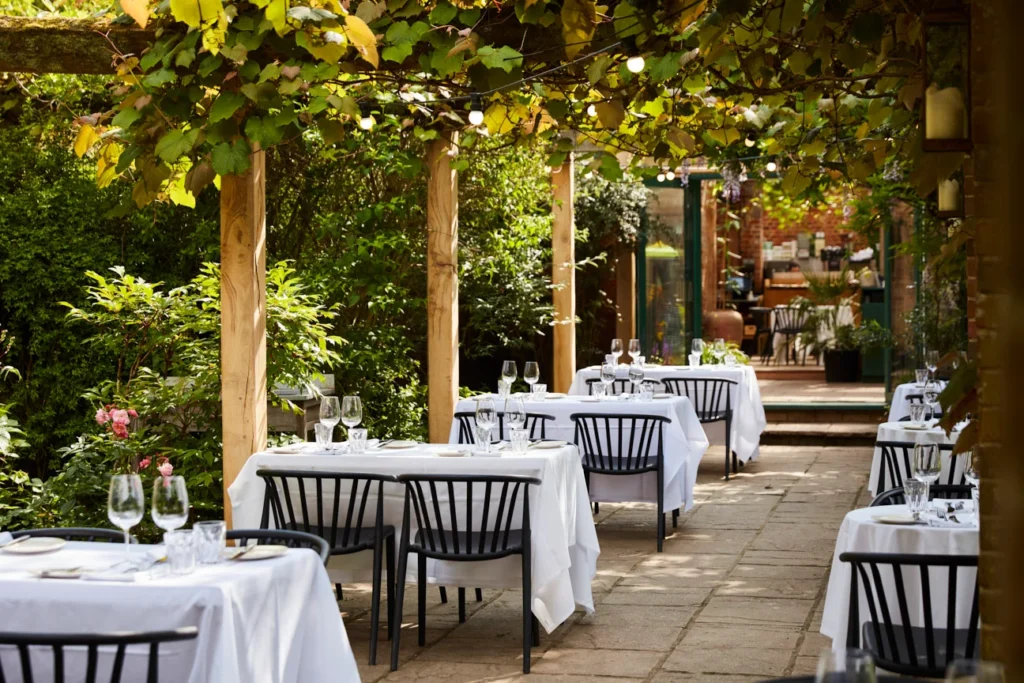
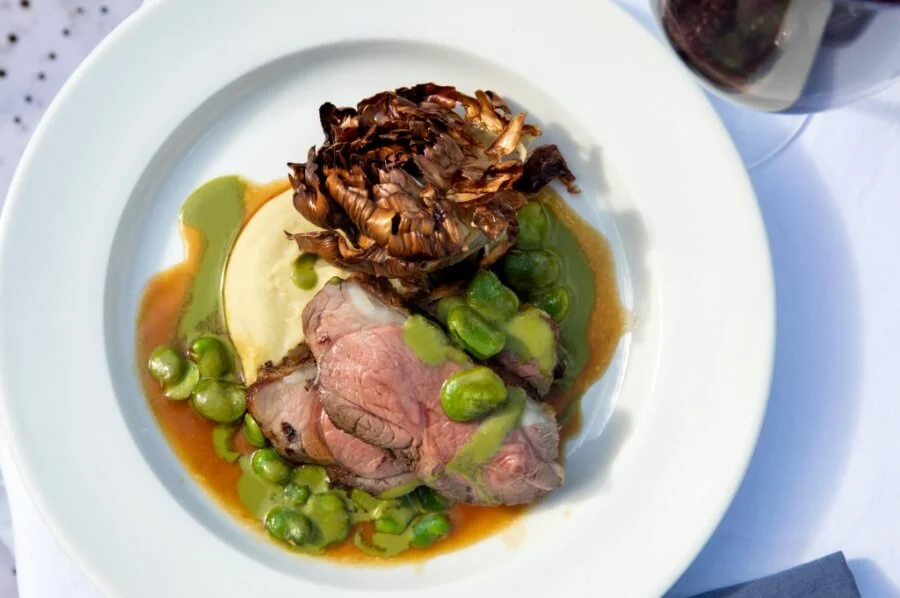
Owners Ruth Leigh (yep, daughter of Rowley) and chef Oli Brown have created something truly special here, with hyper-seasonal menus that change regularly to reflect what’s best from both local and European producers. Think lamb chump with broad beans, artichokes and bagna cauda or
A typical evening might begin with a delicate castelfranco salad with apples, walnuts and dolcelatte, before moving onto their sublime crab risotto with fennel and chilli, pitched at a reasonable £18 and worth every penny and grain. The pâté en croûte – a generous slice of Mangalitsa pork and duck liver wrapped in golden pastry with PX jelly – is as technically satisfying a piece of pastry work as you’ve find in the whole county.
For mains, the acqua pazza swimming with cod, mussels, courgette and tomato showcases Brown’s deft hand with seafood, while the lamb chump with broad beans, artichokes and bagna cauda manages to be both satisfying and light.
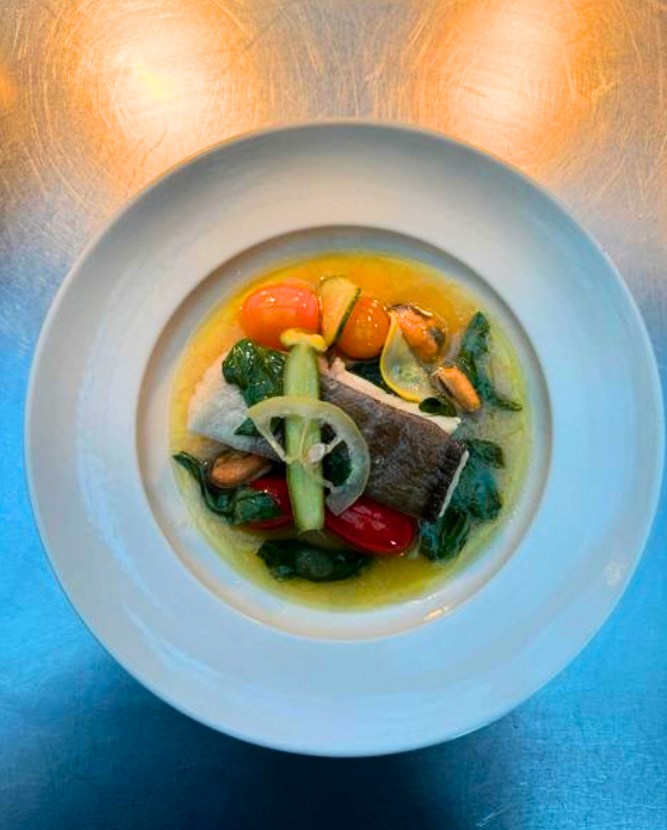
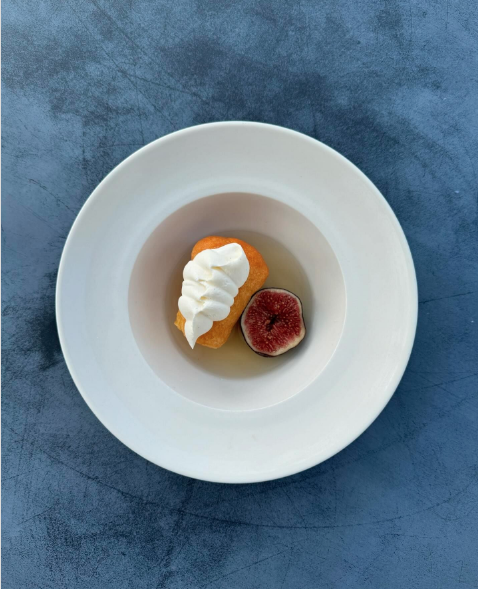
Groups should consider the sharing rib of beef with ceps, garlic and parsley, served with gratin dauphinois – at £95 it’s a splurge, but feeds 3-4 generously. Whichever way you play it, end with a textbook rum baba that is as boozy and bracing as anything we’ve tried this side of Naples. And we’ve tried a lot of them.
The wine list leans heavily Italian with some excellent French and local bottles in the mix – start with a glass of Kent’s own Pelegrim Brut while you peruse the menu. The cocktail list draws on the Italian aperitivo tradition, with drinks like the fig leaf negroni making excellent use of produce from the kitchen garden.
Visit on Wednesdays for their excellent value steak night menu at £30 for three courses, or make a Sunday afternoon of it with their £50 set roast menu. For overnight guests, breakfast is a treat – the full breakfast at £18 hits all the right notes, while the cep omelette offers something more unusual and decidedly autumnal to start your day.
The restaurant is open Wednesday to Saturday for dinner (6-9:30pm), with lunch served Saturday (12-3pm) and Sunday (12-4pm). Book well ahead for one of their beautifully appointed bedrooms if you want to make a night of it – and trust us, after a few glasses of their carefully chosen Italian reds, you probably will.
A spot in the National Restaurant Awards top 100 feels very well deserved.
Wesbite: updownfarmhouse.com
Address: Updown Farmhouse, Updown Rd, Betteshanger, Deal CT14 0EF
The Rose, High Street
Ideal for laid-back but precise modern British cooking…
Nowhere embodies Deal’s renaissance (‘assaince’?! Is the ‘re’ even appropriate?) quite like The Rose. This 200-year-old pub on the High Street has been transformed into part of what The Times dubbed ‘the coolest spot on the Kent coast’, and it’s easy to see why. The dining room, with its original 1950s wood panelling, sets the scene for cooking that celebrates seasonal Kentish produce with precision and flair. We see a theme developing here…
Start with a plate of their exemplary snacks – the short rib croquettes at £7 are a must, while Maldon oysters with bramley apple mignonette make a beautifully bracing, briny opener. The starters proper showcase both technique and seasonality – salt-baked celeriac arrives with cider butter and a study in wild mushrooms both grilled and raw, while the pumpkin porridge over toasted barley is given verve via blue cheese. Yep, autumn has very much arrived at The Rose in Deal, so you might as well hunker down.
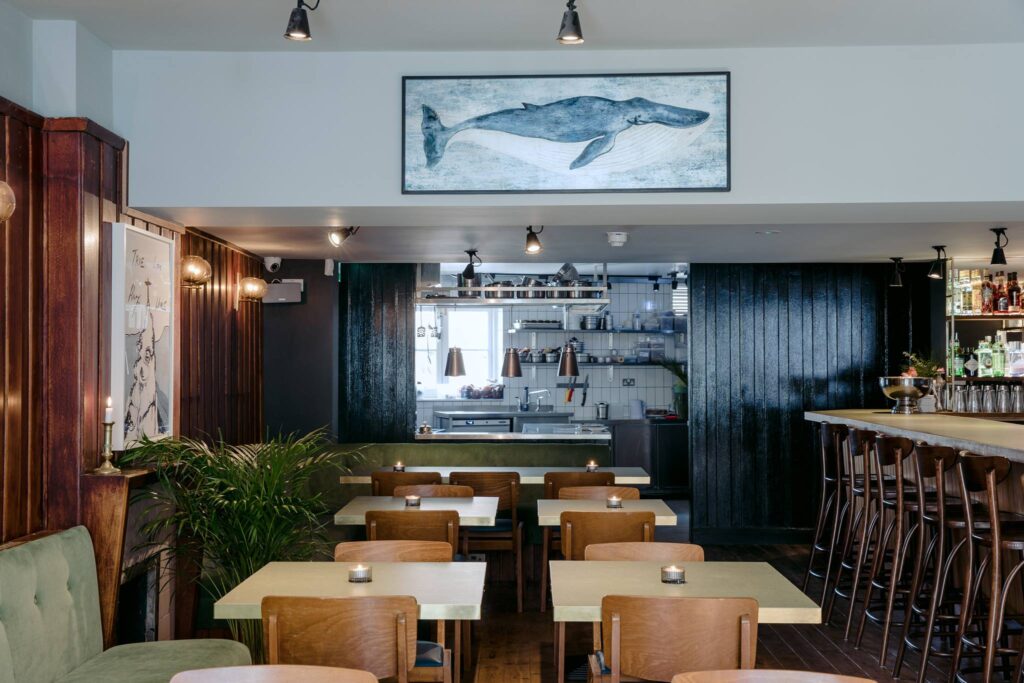
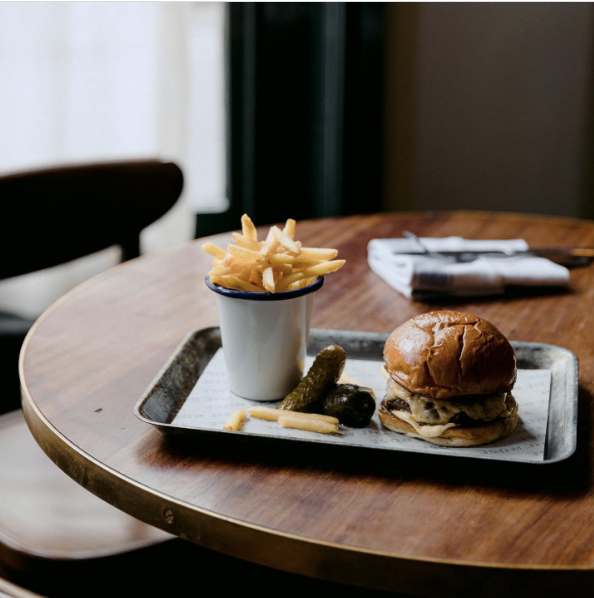

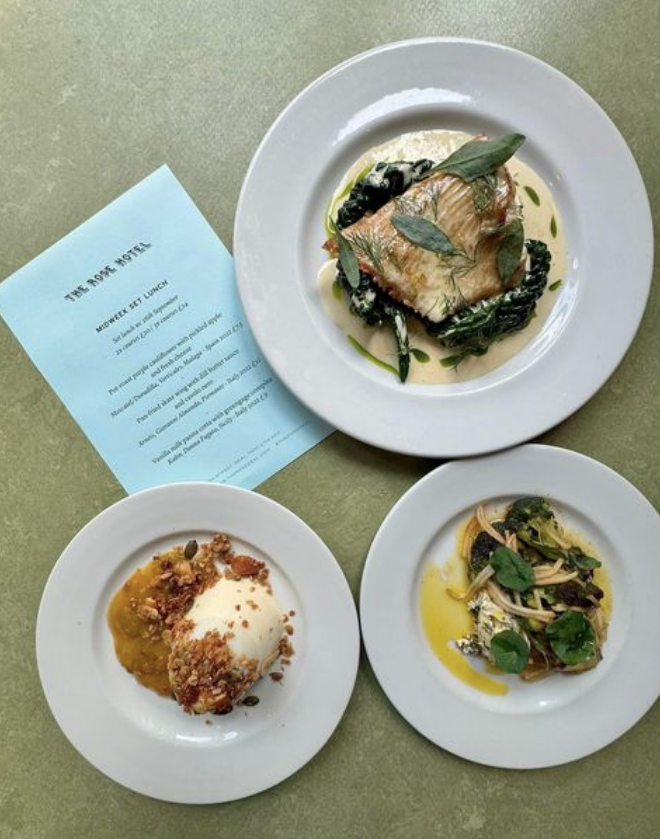

Main courses strike that sweet spot between comfort and refinement. Their halibut, poached in brown butter and served with sea herbs is a masterclass in classical cooking done right. At £28, you’d hope so, too. The braised short rib of beef with béarnaise glaze and savoy cabbage offers deeper, richer pleasures at £26. Even their burger (£17, served with salty, skinny fries) has achieved cult status locally.
Save room for dessert – Nuno’s olive oil cake is a legacy of the restaurant’s collaboration with acclaimed Portuguese chef Nuno Mendes, who helped write the opening menu here, and remains one of the menu’s highlights. The blackberry and custard mille feuille shows similar finesse.
They do a great set lunch menu, too. On a recent visit we had a pot-roasted purple broccoli with pickled apple and fresh cheese (Sportsman-inspired, we’re sure of it), pan-fried skate wing with dill butter sauce and cavolo nero, and to end, a vanilla milk panna cotta with greengage compote, all for just £24. Fabulous stuff indeed, and we’re already planning a return visit.
The kitchen works closely with an impressive roster of local suppliers including The Black Pig butchers, Jenkins & Son fishmongers (also featured on this list) and Docker’s bakery, lending real provenance to every plate. And if you find yourself too comfortable to contemplate the journey home, their eight individually designed bedrooms upstairs (from £125 per night, breakfast included) offer the perfect excuse to extend your stay.
Open daily, with lunch served Tuesday to Saturday (12-2:30pm), dinner nightly (6-9pm), and a generous Sunday service running from midday to 4pm. The bar stays open until 10pm for those wanting to linger over their excellent wine list.
Given its reputation as Deal’s hottest table, booking ahead is strongly advised, particularly for weekend dinner service.
Website: therosedeal.com
Address: 91 High St, Deal CT14 6ED
Frog & Scot, High Street
Ideal for convivial French bistro dining with a local accent…
In a cool pistachio-hued space on Deal’s High Street, this beloved bistro from husband-and-wife duo Benoit and Sarah Dezecot (the eponymous ‘Frog’ and ‘Scot’) is currently (and for the foreseeable, judging by its popularity) playing host to one of the most exciting culinary ventures in town. Cherub’s, a pop-up restaurant concept by former Bouchon Racine chef Jakob Grant, is delivering seasonal French-inspired cooking that’s both precise and soulful.
It’s sustainable too, the menu largely built around surplus stock provided by local butcher’s, fishmonger’s and farmers. It reads like a love letter to classical French technique with contemporary British flair. Start with plump moules mouclade or the excellent steak tartare, both clocking in at just north of a tenner.
Boudin noir – with the crisp exterior such a slice demands – is served with fig sauce and radicchio. It’s a brooding little number, and offers a masterclass in balancing rich and bitter notes. Whole sole with trout roe butter sauce doesn’t exactly lighten things up, but certainly lets Grant show you that he knows his way around a fish. Which is kind of a prerequisite for cooking by the coast, don’t you think?

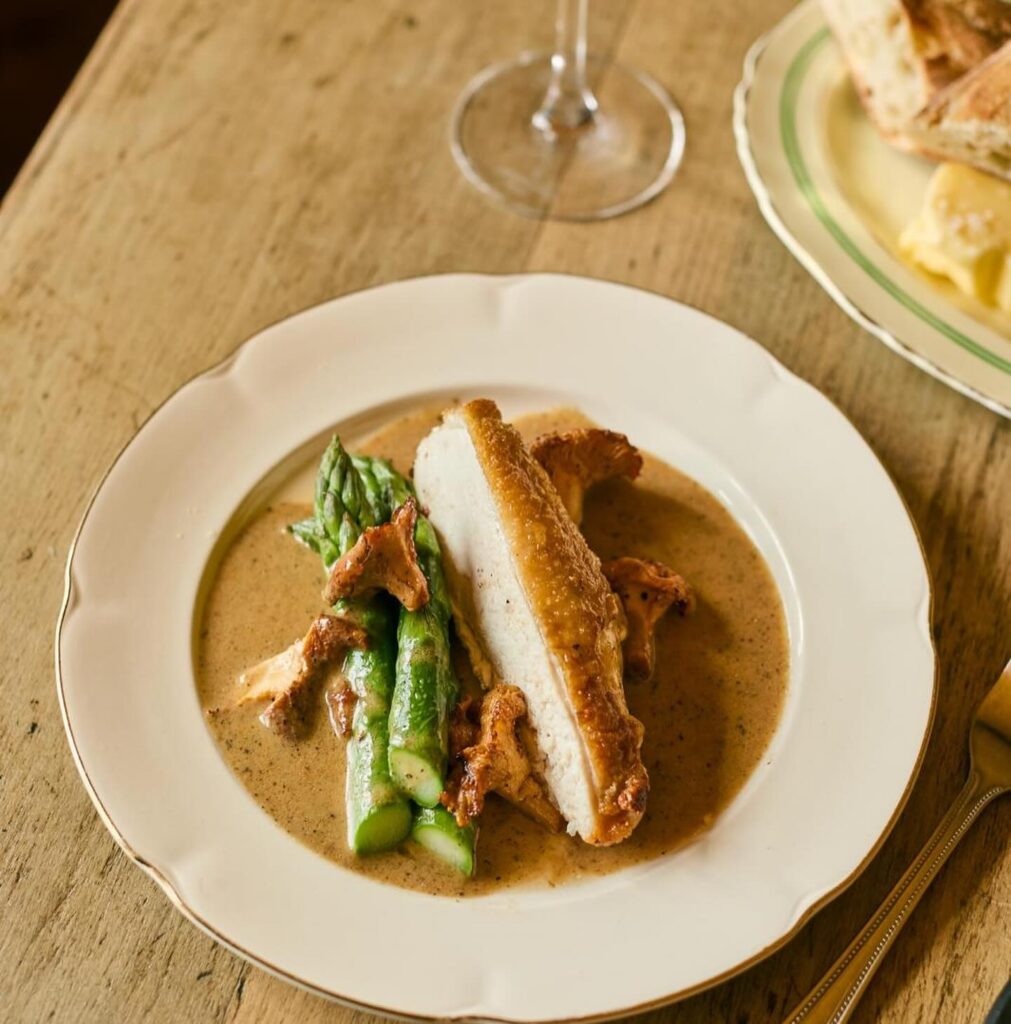


If that all sounds a touch stripped back for your liking, rest assured there are big, gutsy sharing plates too; the côte de boeuf with café de Paris butter and chips is perfect for three, and is pitched at £82. It’s the sort of dish that makes you fall in love with restaurants all over again. Sunday lunches are a particular highlight, too, with a two-course set menu at £25 (three courses £30) offering choices like perfectly pink rib of beef or pork loin, all served with flamboyantly risen Yorkshire puddings and seasonal vegetables.
Wash it all down with draught beer from local brewers Time & Tide (their Deal Pale Ale is a steal at £6.90 a pint). Or, wines by the glass, which start at an inclusive £6.50 for a vivacious Trebbiano d’Abruzzo. Whichever way you play it, open proceedings with their rhubarb negroni at £10, or for something alcohol-free, their Mother Root (ginger, fiery, fresh) at £9 hits all the right notes.
Just a few doors down at number 102, Frog and Scot’s sister venue Le Pinardier offers one of the most interesting wine selections in Kent. This cosy bar specializes in French wines but roams further afield too, featuring everything from Tillingham’s local vintages to interesting bottles from Jura and Alsace. It’s the perfect spot for a pre-dinner aperitif or post-meal digestif, particularly on Saturdays when live acoustic music sets the mood from 8pm.
Monthly wine clubs and Sunday sessions with resident DJ Eclectic Beach add to the convivial atmosphere that makes Frog & Scot more than just a restaurant – it’s become Deal’s de facto living room. Open Thursday to Sunday, with dinner service Thursday and Friday (6-9pm), and both lunch and dinner at weekends. Sunday service runs 12-4:30pm. Children and dogs are welcome – just mention them when booking.
Website: frogandscot.co.uk
Address: 86 High St, Deal CT14 6EG
Deal Pier Kitchen, Deal Pier
Ideal for brunching with spectacular sea views…
The walk to the end of Deal’s striking brutalist pier is worth it for the food alone at Deal Pier Kitchen. That said, those floor-to-ceiling windows offering 180-degree views of Deal’s coastline (can you ever have 360 views of the sea? Only if you’re in it) certainly don’t hurt.
Housed in an attractive glass and timber building, this versatile venue has mastered the art of seamlessly transitioning from laid-back brunch spot to evening destination dining. By day, it’s all about their legendary bottomless brunch (£38, available throughout the week), which includes unlimited Aperol Spritz, prosecco, Bellinis or Bloody Marys alongside any dish from their creative brunch menu.



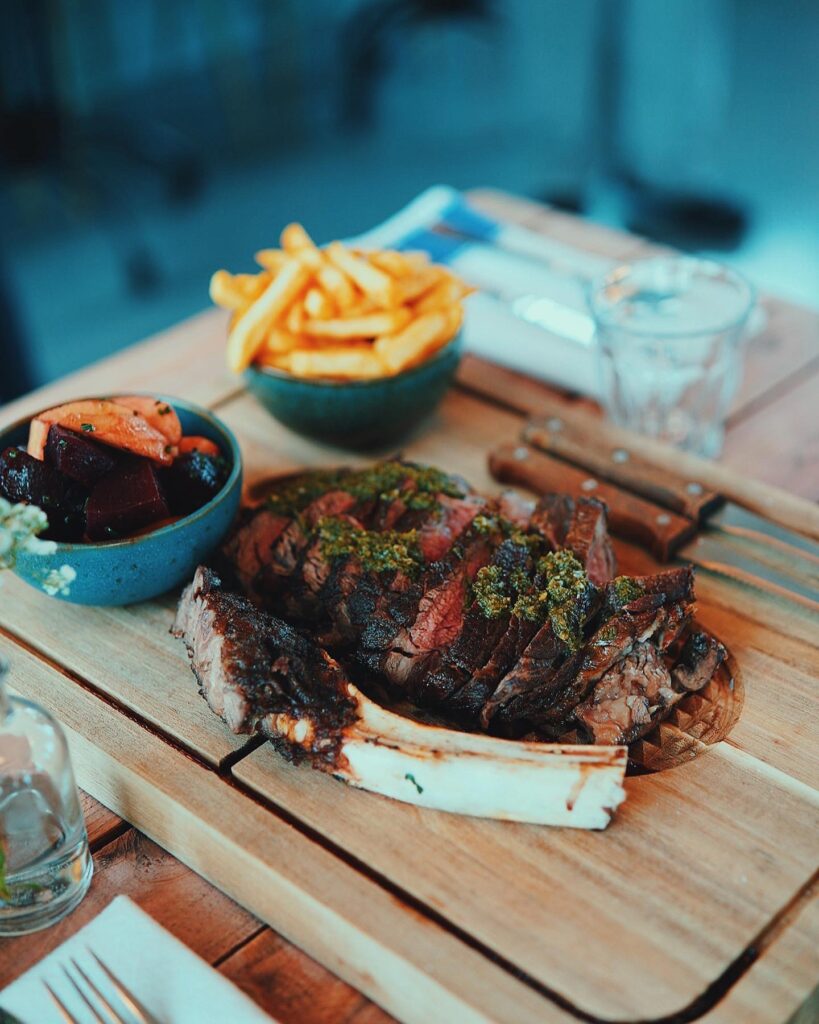
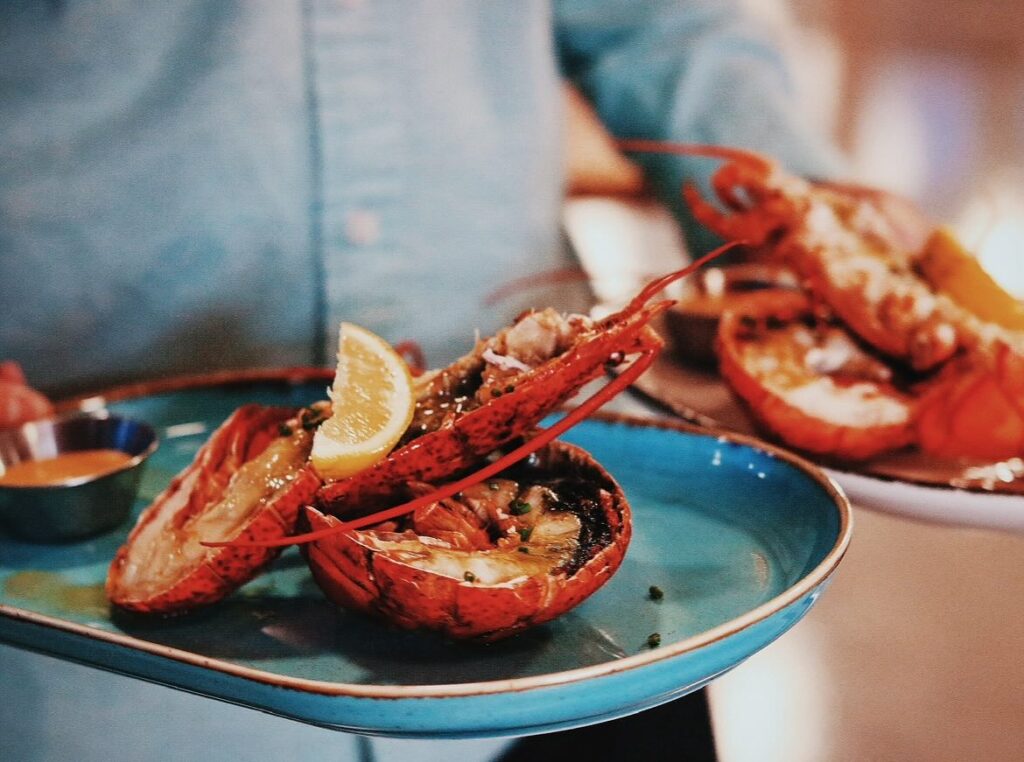
Their eggs royale – featuring soft poached eggs with citrus-cured salmon and dill on toasted muffins – is a standout, while the Thai red curry mussels with sourdough is a little confusing, sure, but it’ll satisfy those looking for a point of difference in their brekky. There’s even a non-alcoholic version of the brunch at £28 for those keeping clear-headed. But really, what sick fuck drinks unlimited soft drinks like some kind of maniac? If it means another hour admiring this view, we might even be persuaded…
True to the chameleon-like nature of the place, Thursday evenings see the space transformed for their popular pizza pop-up (5:30-8:30pm), where stone-baked sourdough bases come topped with combinations like wild mushroom and prosciutto with shaved parmesan (£13), or the seafood-forward Oceano with anchovy, olive and rocket at £12.50. The buy-one-get-one-free deal on cocktails and spritzes makes this a particularly good-value night out.
A further shapeshift occurs come Friday and Saturday evenings, as the restaurant evolves again into something altogether more sophisticated. Their steak and lobster nights have become something of an institution, with sharing plates like The Banquet (£110 for two) offering premium steaks and whole lobster alongside garlic prawns and a textbook béarnaise.
For solo diners, the Surf and Turf combining lobster tail and 8oz sirloin offers the best of both worlds. The wine list is particularly strong on sparkling wines – try the Chapel Down Sparkling Bacchus at £40 for a taste of Kent’s burgeoning wine scene.
Named by The Times as one of Britain’s top 30 beach cafés and restaurants, Deal Pier Kitchen manages to be all things to all people – from casual coffee spot (they’re open from 9am most days) to serious dining destination. Dogs are welcome during daytime service, making it perfect for post-walk refueling.
Open Monday to Wednesday 10am-4pm, Thursday 10am-9pm, and Friday to Sunday 9am-5pm, with evening service Thursday to Saturday. Booking is essential for bottomless brunch and steak and lobster nights, though daytime visits operate on a walk-in basis. Keep an eye on their social media for seasonal changes to opening hours.
Website: dealpierkitchen.com
Address: Pier, Beach St, Deal CT14 6HY
Read: Where to eat in Whitstable
The Seafood Bar at Jenkins & Sons, High Street
Ideal for the freshest seafood in town…
When fourth-generation fishmonger Darren Jenkins recently added casual dining to his family’s legendary fish shop (a Deal institution since the 1940s when his great-grandfather Charlie started the business with just a horse and cart), he didn’t just create a fantastic place to buy day-boat caught fish – he launched one of Deal’s most intriguing lunch spots.
The shop itself, in 2022 named one of Britain’s top 10 fishmongers in the Great British Food Awards, still gleams with the morning’s catch, but now you can also settle in with a glass of prosecco and let their talented kitchen team work their magic with the product they’re so clearly very proud of. With seating for 24 lucky diners, the new seafood street food menu makes the most of whatever has been landed that morning, treated with reverence and a light touch.
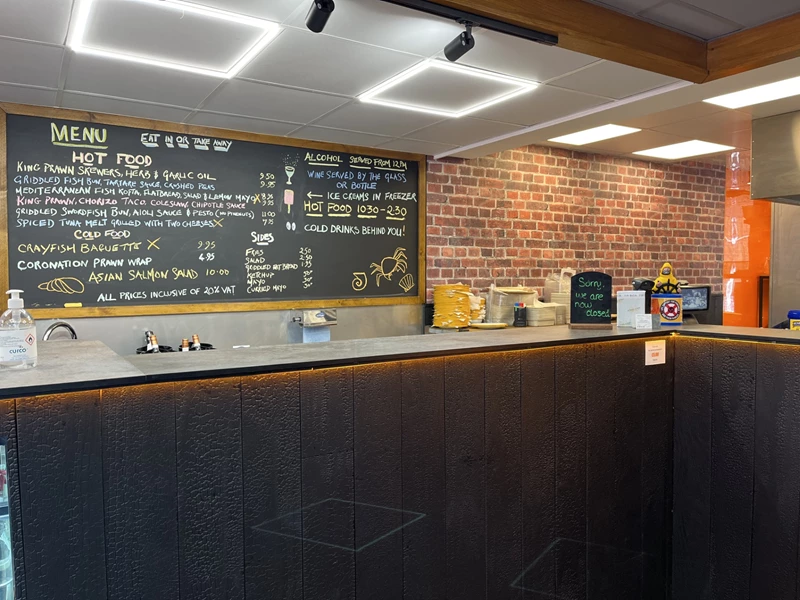
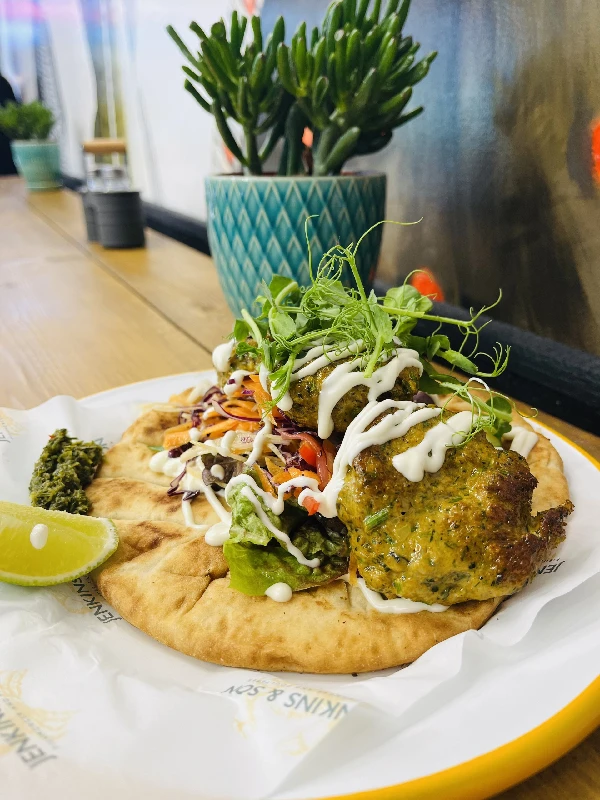

The kitchen sends out a regularly changing selection that reads like a greatest hits of seaside eating – think pristine oysters freshly shucked to order, generously filled lobster baguettes, and Mediterranean fish koftas that would give any Greek taverna a run for its money. Their blackened salmon salad shows similar finesse, while the fish tacos actually pay lip service to that ‘street food’ billing.
For the full experience, order one of their laden seafood platters, perfect with a chilled bottle of fizz, or grab a classic Kent crab sandwich to take down to the beach – it’s just a two-minute stroll away. The commitment to sustainability shown in the retail side of the business (they exclusively work with day boats rather than destructive trawlers) carries through to the kitchen, meaning you can enjoy your lunch with a clean conscience and an even cleaner flavour.
Still, first and foremost, Deal’s only wet fish shop is still very much that – supplying both the public and many of Kent’s best restaurants – but this addition of casual dining makes the most of their impeccable supply chain, minimising food waste in the process. What’s not to love?
The streetfood menu is served here from Tuesday to Saturday, 11am-2:30pm, no bookings required. Just turn up hungry and put yourself in the hands of a family that’s been handling Deal’s seafood for four generations.
Website: jenkinsandsonfishandgame.co.uk
Read: The best restaurants in Falmouth
Hut 55, The Beach, Walmer
Ideal for picture-perfect beach picnics…
Sometimes the simplest ideas are the best, and Hut 55 – a coffee and cake shack nestled directly on the pebbles at Walmer beach – proves the point perfectly. A short stroll from Deal town centre along the seafront brings you to this charming spot where homemade treats are served against a backdrop of endless sea views (and on a clear day, you can spot France).
The daily-changing counter groans with the kind of bakes that make you glad you walked here – think thick, fat quiches, courgette and ricotta galettes that put most restaurants’ vegetarian offerings to shame, and Ploughman’s picnic pies that demand to be eaten al fresco. The fresh cream Victoria sponge is a winner, too, and their cookies make the perfect accompaniment to a cup of their excellent coffee.
Everything comes packed in compostable containers, ready to be enjoyed on their deckchairs and outdoor benches, or taken for a wandering lunch along the beach. Their location opposite the paddling pool makes this an especially good pit-stop for families, though the quality of the baking draws everyone from solo walkers to returning locals.
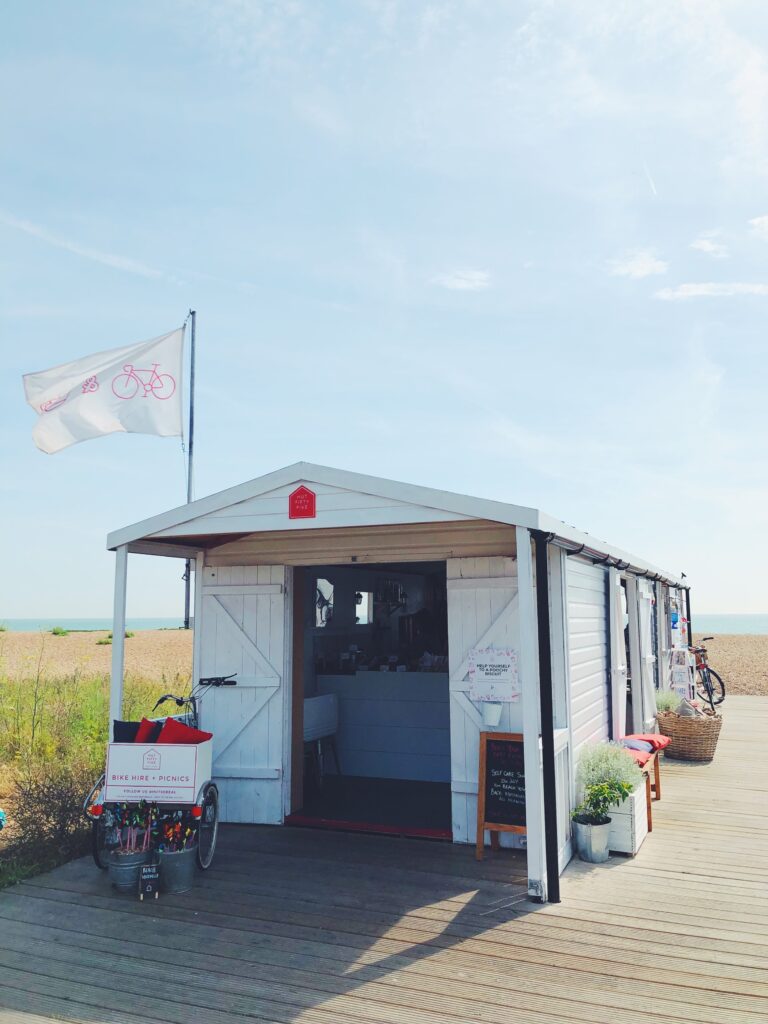
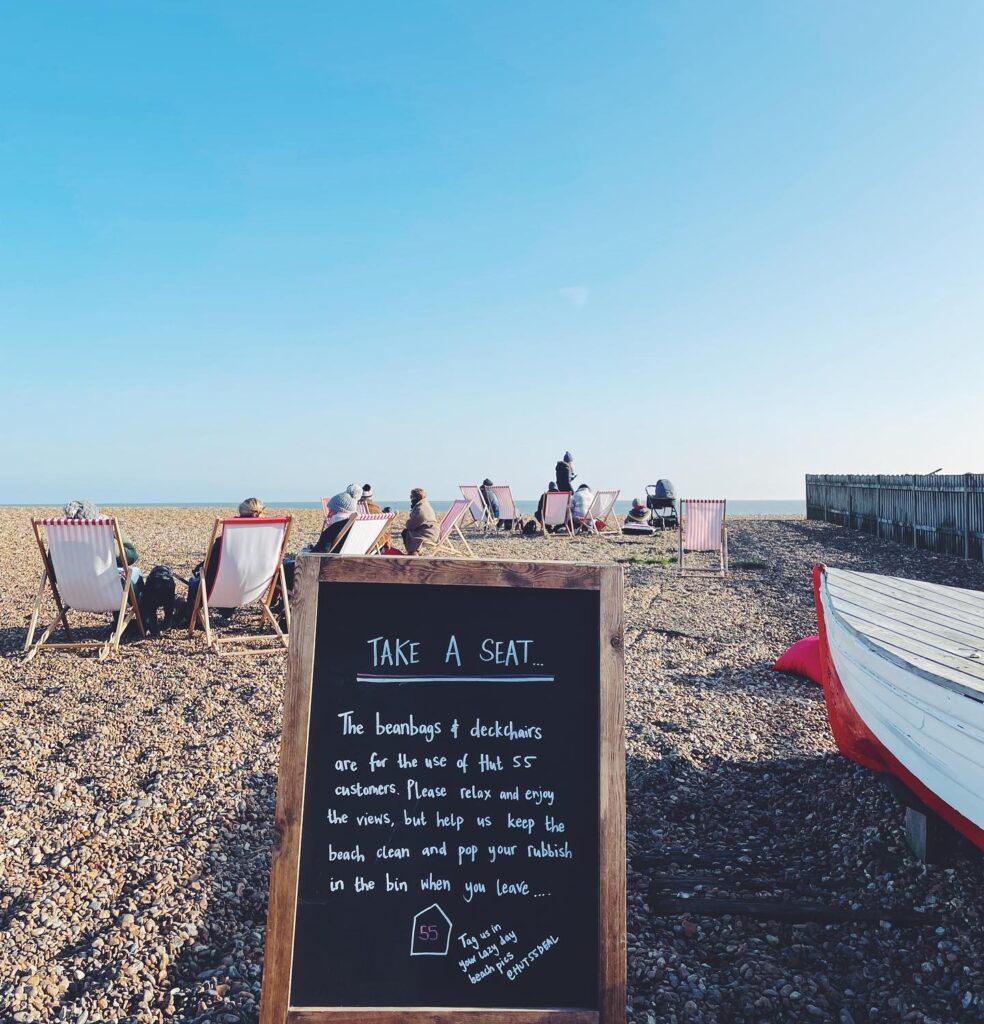
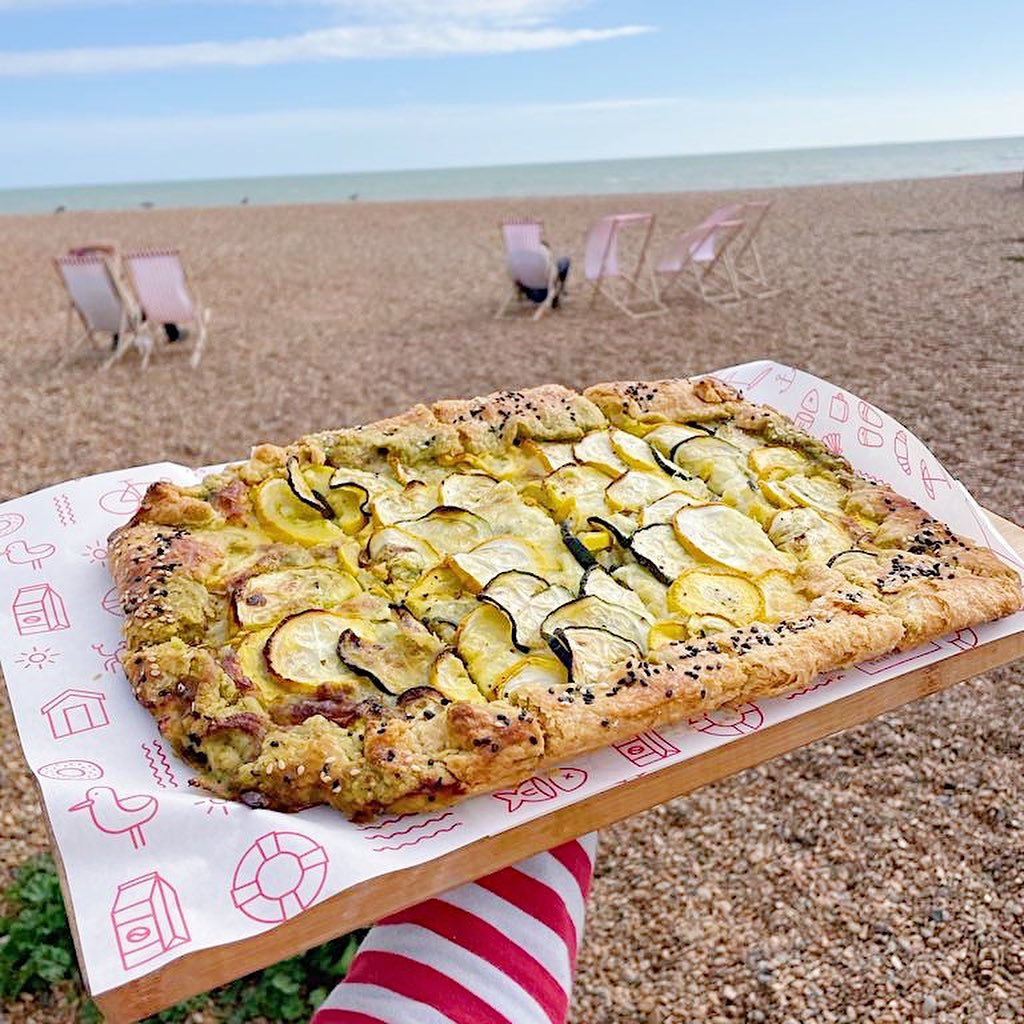
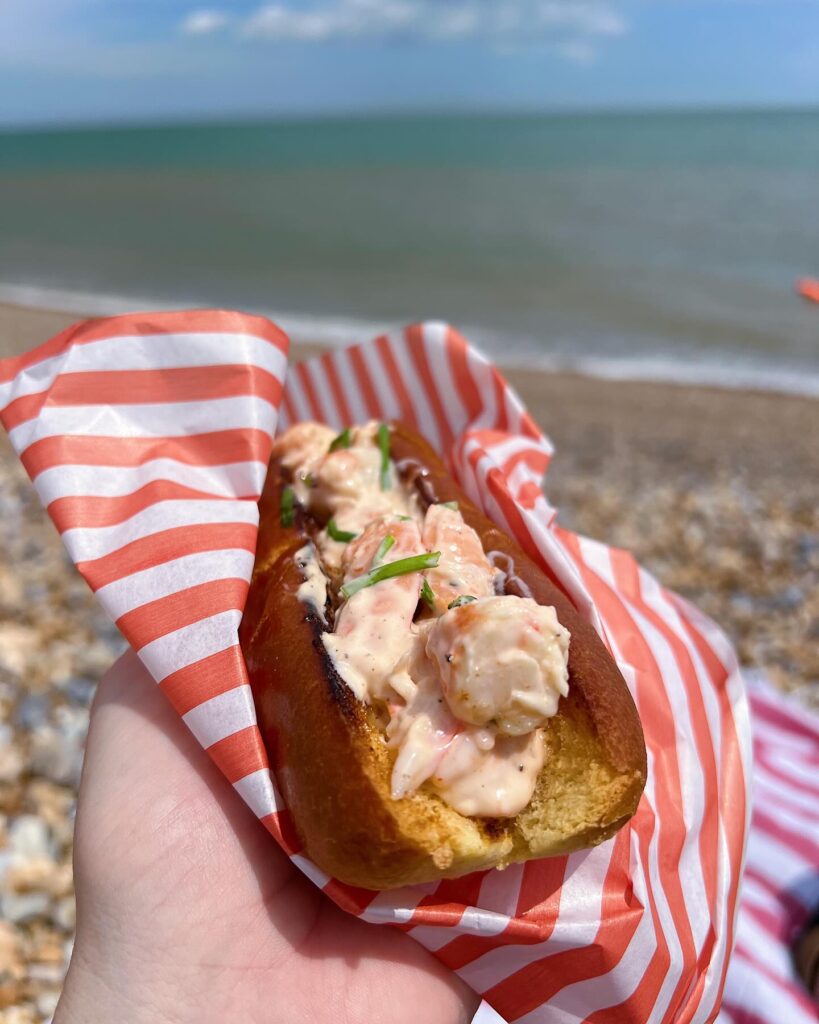
Summer brings additional pleasures in the form of their ‘Sunday Sundowners’ sessions (5-8pm), where the simple beach hut transforms into an enchanting evening spot. Think freshly shucked oysters and peel-and-eat prawns paired with organic wines and local beers, all accompanied by acoustic music as the sun sets over the Channel. Pre-ordering for these sessions is recommended – they’ve developed quite the following.
While the beach location is idyllic, it does leave them at the mercy of the elements – check their social media during inclement weather before making the journey. Open Thursday to Sunday, 9am-3pm during winter months, with extended hours and days during summer. Come spring, they also offer bike hire and pre-ordered picnic hampers, perfect for exploring the Kent coastline replete with a fine feed when you need a break. Free parking is available along Marine Road, or it’s a pleasant 10-minute walk from Deal town centre.
Website: hut55.co.uk
Address: Marine Rd, Walmer, Deal CT14 7RD
The Dining Club, Middle Street
Ideal for an intimate supper club experience…
Sometimes the best dining experiences feel more like being at a friend’s dinner party than a restaurant, and that’s exactly what husband-and-wife team Scott and Suzanne Roberts have created at The Dining Club. Hidden away on Middle Street, this unique venue offers something genuinely different from Deal’s other dining options.
The format is refreshingly simple (or, to some including us, a tad confusing) – pay £20 for annual membership (per household), then book into one of their five individually styled dining rooms, where Scott (who previously earned 2 AA Rosettes for six consecutive years at his Cornish hotel) creates weekly-changing menus that roam the globe for inspiration. Bring your own bottle (there’s a modest £2.50 corkage charge per person) and settle in for what feels more like a private dinner party than a regular restaurant service. In the best possible way, we should add…

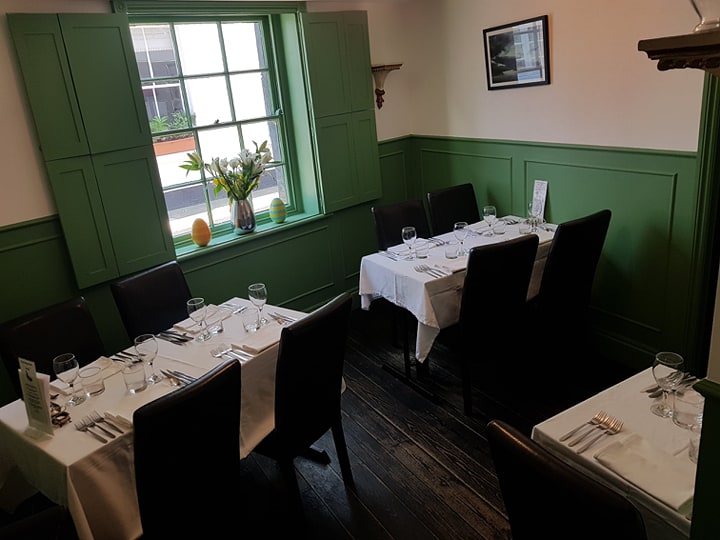

The Dining Club’s cooking is seriously accomplished, in a homely kind of way, which is quite a nice balance, quite frankly. A recent Sunday lunch saw diners treated to an ambitious game-centered menu that sang of the seasons – peppered venison carpaccio to start, followed by a warming cauliflower and hazelnut soup, before the main event of perfectly pink grouse with dauphinoise potatoes. A toffee and banana soufflé provided the grand finale, though we can’t help but admit we were wishing they had slipped some game into the sweet course, somehow. Pureed partridge souffle, anyone? Anyway, at £30 for four courses, it’s remarkable value for cooking of this pared back confidence.
Keeping things refreshing, menus might take inspiration from classical British, French or Spanish cuisine one week, before exploring Chinese flavours the next. Scott even occasionally creates menus in homage to internationally renowned chefs and their signature dishes. Vegetarian options are always thoughtfully considered – that grouse menu, for instance, offered a crowd pleasing mozzarella and courgette loaf as an alternative main.
The restaurant’s tagline is “great food, great company” so don’t forget to invite us when you go!
This one operates on Friday and Saturday evenings only, from 7-11pm, with dining strictly by reservation.
Website: thediningclubdeal.co.uk
Address: 69 Middle St, Deal CT14 6HP
Middle Street Fish Bar, Middle Street
Ideal for proper British fish and chips…
No seaside town worth its salt (or vinegar) would be complete without a stellar fish and chip shop, and Middle Street Fish Bar more than delivers on that front. This no-frills spot might be cash-only and refreshingly old-school, but it consistently serves up some of the best fish and chips along the Kent coast.
The secret here lies in the basics done exceptionally well – a choice of fresh cod, haddock, plaice or rig (all at an absurdly good value – in this economy! – £9 with chips), each encased in crisp golden batter that shatters satisfyingly with each bite. The chips strike that perfect balance between fluffy interior and crunchy exterior with that slightly anaemic quality you want from chippy chips (yes, Cole) while slightly browning mushy peas provide the requisite dose of health that you need, for the sake of breaking the beige as much as anything else.
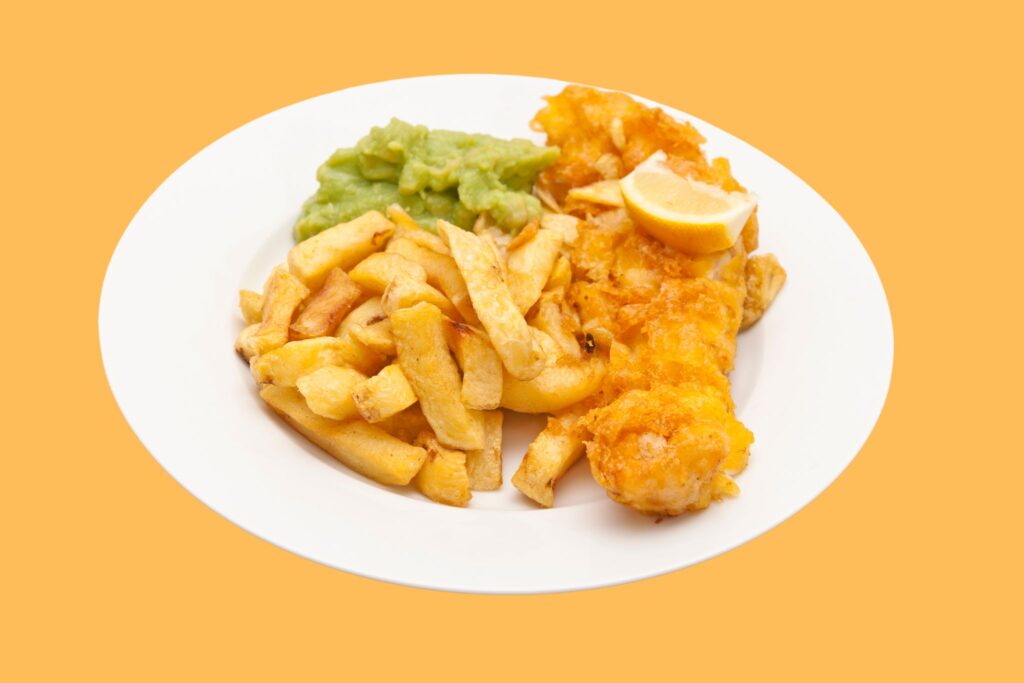
The Fish Bar offers good value for holidaying families, with a dedicated children’s menu doing smaller portions of classics like cod and chips for £6, or fish cake and chips for just £3.50. For dessert, the pineapple fritter with ice cream provides a perfectly retro ending to your meal.
Take your paper-wrapped, gently greased bundle to the beach and enjoy it the proper way – with wooden fork in hand, watching the waves roll in. Just watch out for the seagulls; they know quality when they see it too. And don’t forget to bring cash – they’re as old-school in their payment methods as they are in their aesthetic.
Website: 78 Middle St, Deal CT14 6HL




